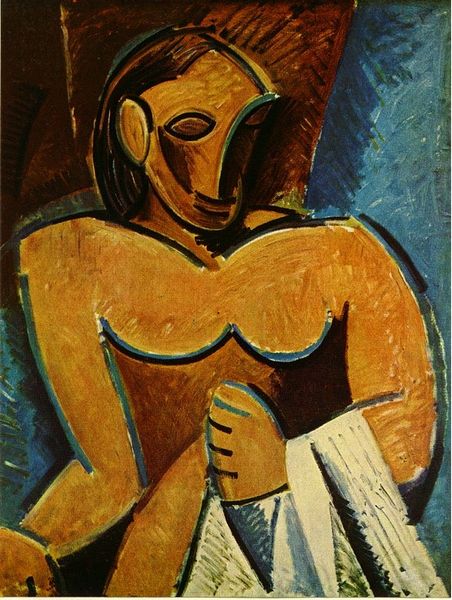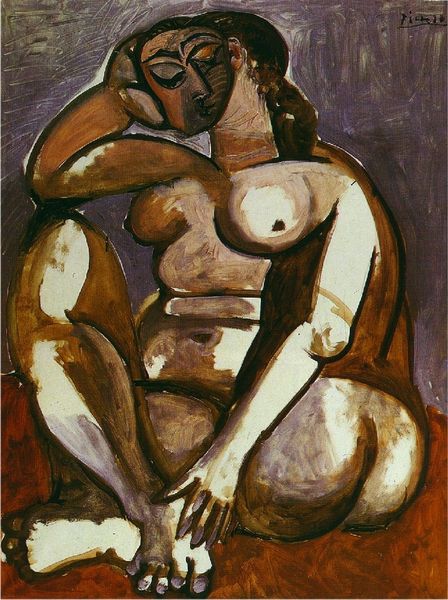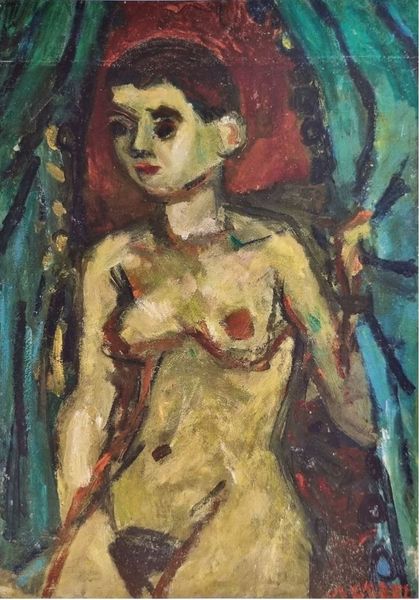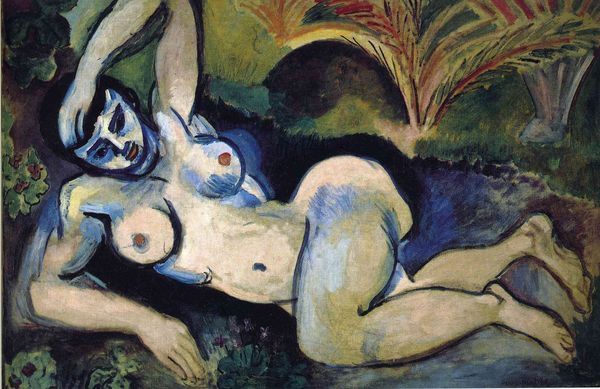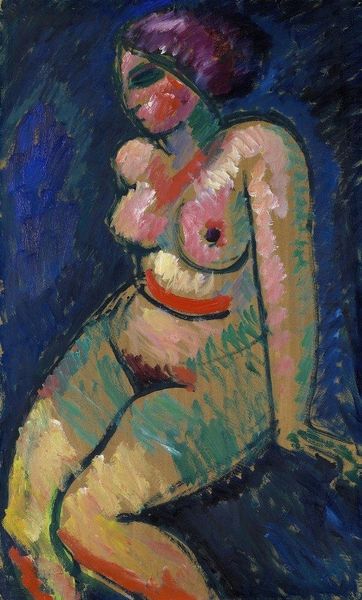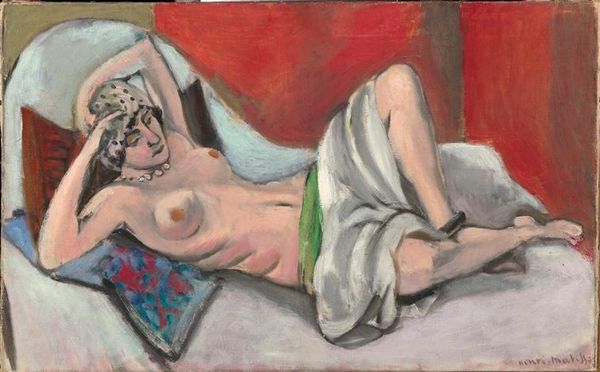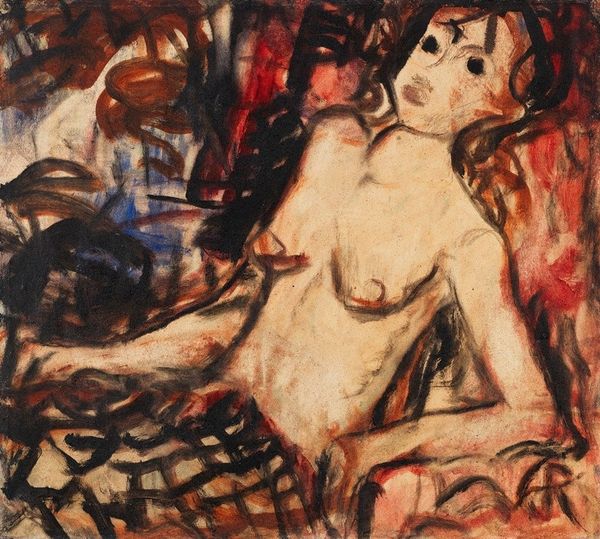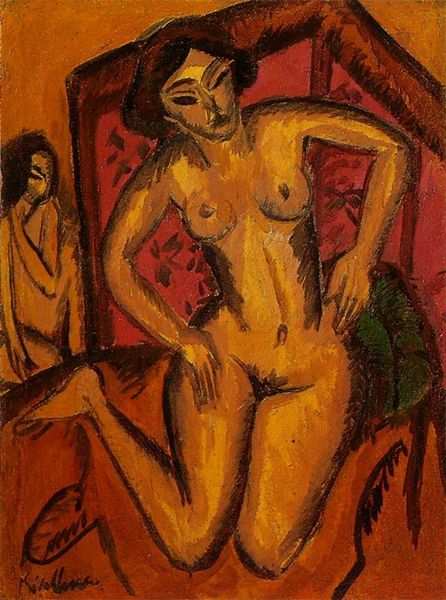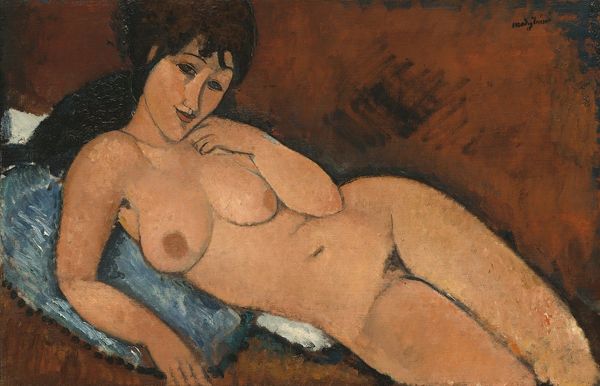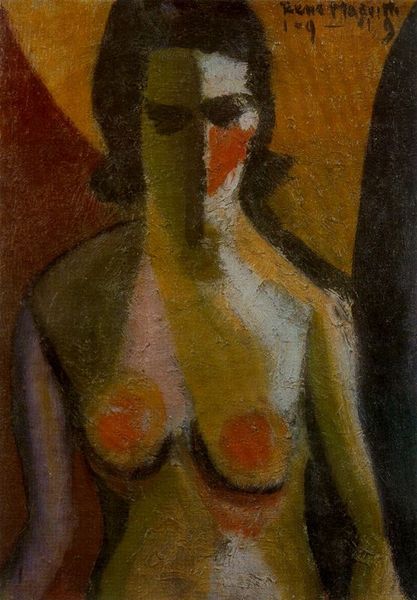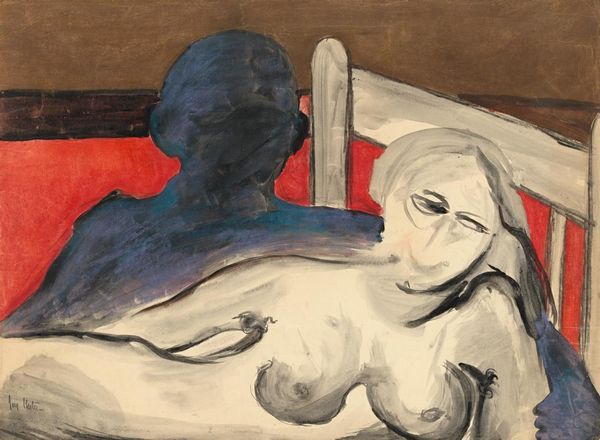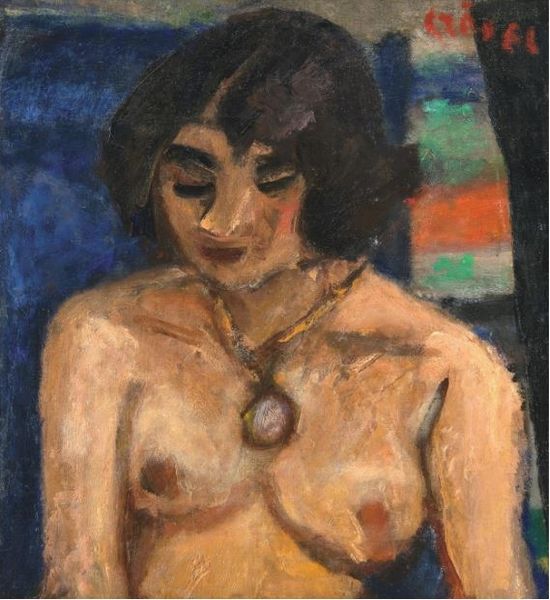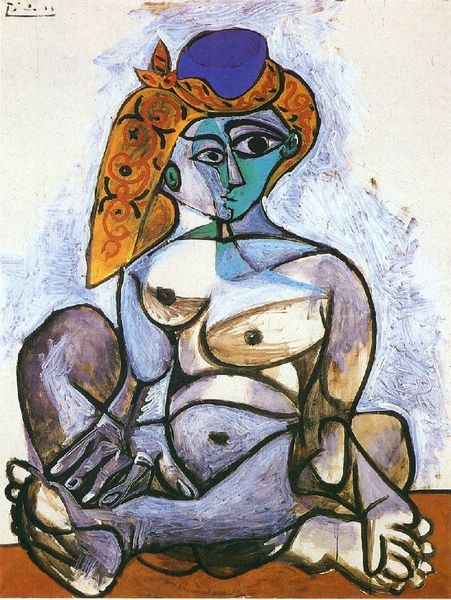
painting, acrylic-paint
#
portrait
#
painting
#
acrylic-paint
#
figuration
#
expressionism
Copyright: Oswaldo Guayasamin,Fair Use
Curator: Here we have a piece titled "La Edad de La Ternura," by Oswaldo Guayasamin. It's quite a striking image. Editor: It's… raw, isn't it? Immediately, I notice the stark colors – that piercing blue backdrop against the earthy yellows and blacks. It gives the figure a very immediate, almost brutal presence. What can you tell me about its materiality? Curator: It appears to be executed in acrylic paint. Considering Guayasamin’s broader artistic mission—centering the suffering and struggles of the Indigenous peoples of Latin America—I read the deliberate application of material and paint texture here as embodying both artistic integrity and perhaps, on a deeper level, reflecting the earth and resilience that roots those themes. Editor: Acrylic as a choice is so interesting to me. It democratizes painting, making it accessible beyond the elite patronage system typically linked with oil paintings. Guayasamin brings, with acrylic paint on what is likely canvas, a level of resourcefulness and directness. What do you think the "age of tenderness" is saying, here? It is hardly gentle. Curator: Well, look at those abstracted facial features – the closed eyes, the suggestive leaf or wing over the eye sockets, it seems almost an attempt to find gentleness within a harsh context. I think perhaps he’s trying to see youth and the feminine, even innocence itself, as enduring or fighting their way through a damaged, suffering world. Perhaps it's a reminder that tenderness and humanity exist even amidst such realities. Editor: So, you feel that the raw materiality amplifies that sense of urgency? Like this is less about beauty and more about necessary visibility? Because for me the blocked shapes of color and simplified volumes suggests art labor but it's still unclear if there is critique of production and making here. The question might be the making of mothers in conditions not of their choosing. Curator: Exactly, it's like a declaration rather than a soft rendering. It almost feels like he’s carving the forms and feelings out of his own heart. I get this sensation of something vulnerable trying to shield itself with dignity. Editor: Yes, "declaration" really gets to the activist voice behind so much of Guayasamin's output, the sense of using every fiber to make visible the invisible and the disenfranchised. It makes me reflect on what it takes, materially and emotionally, to create images of trauma with an activist edge— the choices of how to bear witness, and how these become the age of tenderness. Curator: It leaves me contemplating the power of expression to honor the complexities within apparent opposites. Editor: I agree. For me it suggests we think about tenderness outside simple ideas of motherhood or women; a tenderness embodied through political expression and visibility of othered bodies.
Comments
No comments
Be the first to comment and join the conversation on the ultimate creative platform.

